Visiting one of the worlds most remote seagrass meadows
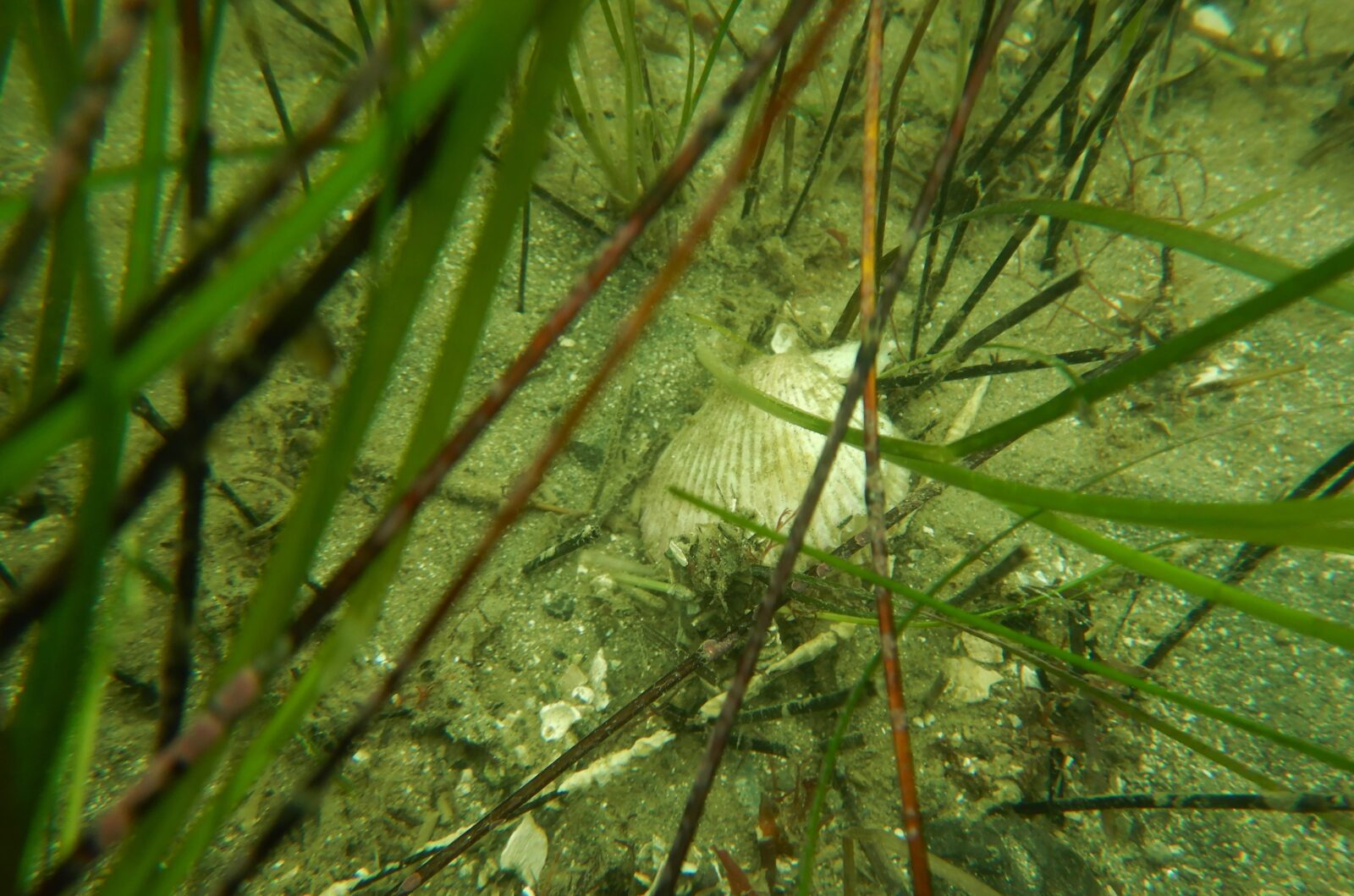
Eva Rothausler On a narrow stretch along the northern-central coast of Chile, the seagrass Heterozostera nigricaulis (syn. Zostera nigricaulis, Heterozostera tasmanica) occurs in three isolated patches no more than 300 km apart. It is a common intertidal to subtidal seagrass in the Zosteracea family and is found growing in protected and soft-bottom areas. Heterozostera nigricaulis is native to the southern coast of Australia (Coyer et al. 2013), from where it colonized Chile some 100s to 1000s years ago (Smith et al. 2018). In Australia, they form extensive meadows that produce large quantities of non-buoyant seeds and specialized vegetative rhizomes used for dispersal (Thomson et al. 2015, Smith et al. 2016, 2018). In Chile, however, H. nigricaulis was never found to flower or produce seeds. Instead, they likely grow only vegetatively, as suggested by a recent study that found the three populations to consist of only two non-flowering clones that are not mixed (Smith et al. 2018). The seagrass meadow of H. nigricaulis at Puerto Aldea is situated in the southern part of the Tongoy Bay, at a small fishing caleta. It has a continuous distribution at 1 to 6 m depth (personal observation) and is protected from onshore winds and waves by the headland Punta Lengua de Vaca, which is an important upwelling zone. The spatial extent of the meadow is about 1.2 km2 (Phillips et al. 1983) where it also grows under the jetty of the fishing caleta. Due to its remoteness and rare occurrence, H. nigricaulis is classified as endangered by the Chilean Ministry of Environment (https://clasificacionespecies.mma.gob.cl/). To date 117 different species of macroinvertebrates and 16 fish species have been reported from the seagrass meadow at Puerto Aldea (González 1990), but most likely the diversity is even higher. The meadow at Puerto Aldea is habitat to the commercially exploited species such as Argopecten purpuratus (scallop) and Romaleon setosum (crab) (Pérez-Matus et al. 2005, SUBPESCA Chile). Consequently, artisanal fishers use the meadow to extract scallops and they have recognized that it serves as an ideal nursery ground for this species, i.e. without seagrass there are no natural scallop populations. For this reason, the fishers protect their seagrass meadow (personal communication). It is estimated that about 30 artisanal fishers are associated to the fishing caleta (SUBPESCA Chile) at Puerto Aldea. As H. nigricaulis seagrass meadows are rare in Chile but provide important ecosystem services, e.g., livelihoods for fishers and efficient carbon sinks (nature-based climate change solutions), their protection must become an important priority in Chile. References Coyer JA, Hoarau G, Kuo J, et al. 2013. Phylogeny and temporal divergence of the seagrass family Zosteraceae using one nuclear and three chloroplast loci. Systematics and Biodiversity 11:271–284. González SA 1990. Heterozostera tasmanica (Martens ex Aschers.) den Hartog y comunidad asociada en el norte de Chile. Pre-graduate thesis in Spanish. Universidad Católica del Norte, Chile. Pérez-Matus A, Cifuentes M, Araya P et al. 2005. Solitary seagrass meadow in Chile supports a unique scallop garden.JMBA Global Marine Environment 2:1-4. Phillips RC, Santelices B, Bravo R, McRoy CP 1983. Heterozostera tasmanica (Martensex Aschers.) den Hartog in Chile. Aquat Bot 15:195-200. Smith TM, York PH, Broitman BR, et al. 2018. Rare long-distance dispersal of a marine angiosperm across the Pacific Ocean. Global Ecol Biogeogr 27:487-496. Smith TM, York PH, Keough MJ, et al. 2016. Spatial variation in reproductive effort of a Southern Australian seagrass. Marine and Freshwater Research 120:214-224. Thomson ACG, York PH, Smith TM, et al. 2015. Seagrass viviparous propagules as a potential long-distance dispersal mechanism. Estuaries and Coasts 38:927–940. Seagrass Project Fondecyt 1231236
Official words for seagrass in Seychellois Creole
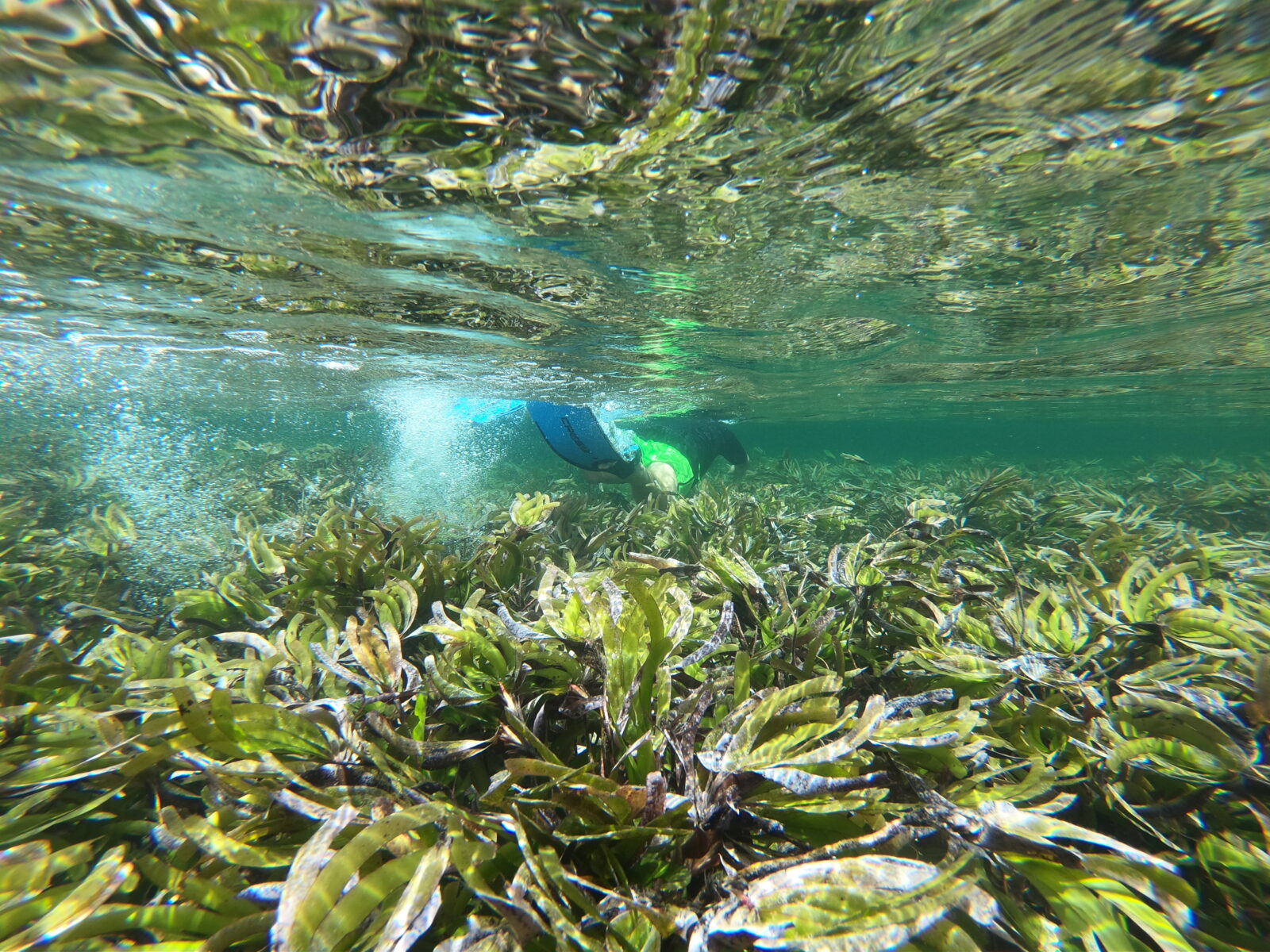
An outreach initiative to entice local ownership of the protection of seagrass meadows Seychelles is not the only country or territory where seagrass has had to play catch up with other types of coastal wetlands and other marine ecosystems. To most Seychellois, up until recently, anything plant-like which is green and comes from the sea has been categorised as gomon; be it seaweed or seagrass. Formally, seagrass has not had a name or term to define it in the country’s native language, Seychellois Creole. The team behind the Coastal Wetlands and Climate Change project, whose main objective was to bring seagrass to the forefront of the climate debate in the small island state, had its work cut out in reaching out to the population (99,202 as of June 2021, National Statistics Bureau) to mobilise interest and concern over the conservation of seagrass. Unrecognised – with no name; so where do you start? It was imperative that seagrass was ‘localised’ to have people be mindful of it when they go for a swim in shallow waters or anchor their boats and jet skis along coastlines. Locally, the process for introducing new words in the Creole language entailed submitting options to the Creole Language Academy which had the responsibility of validating the selection and giving its seal of approval on the chosen words and terms. But, where would the suggestions come from? The avenue which was explored to collect names for seagrass and its five lifeforms, was similar to an alarm on snooze. Seagrass had been in the news and on social media since mid-2020, when one can argue the first alarm went off; we have seagrass, they matter, and we must protect them. Any new development in seagrass news, be it local or international, was similar to a follow-up snooze, reminding people of the initial message and adding more content and context to it. Launching the campaign to identify official Seychellois Creole terms was an exceptionally loud snooze because the project reached out to the public to contribute their ideas and suggestions. The public got the chance to re-visit all the bits of information which had been shared with them all along and engage in something fun: naming a plant! Social media, print media, the radio and emails were all used to reach out to the public to engage in a survey to select and/or suggest names. A very important segment of the public which had to be consulted was local fishermen who undisputedly have a closer connection with the ocean and all that it encompasses compared to the rest of us. Fishermen in Seychelles often come from fishing families and are familiar with terms used as reference to all forms of marine life. As it turned out, according to them, there were already existing names for seagrass; they simply had not been made official. The project team sought the help of local district administrators in identifying and locating fishermen to take part in the nation-wide survey. Those names along with others which were collected from members of the public were assessed by an Emerald Committee made up of linguists, scientists and conservationists specifically set up to prepare a short list for submission to the Academy. Zerb lanmer and Gomon zerb were the two new terms jointly selected to be added to the Seychellois language, respecting both the scientific sense of seagrass as well as incorporating its cultural significance. The words will be featured in the next edition of the Creole dictionary. To find out more about the project’s outreach activities, visit the project’s page: Resources – SeyCCAT – The Seychelles Conservation and Climate Adaptation Trust Submitted by SeyCCAT
Can seagrass help reduce microplastic pollution?
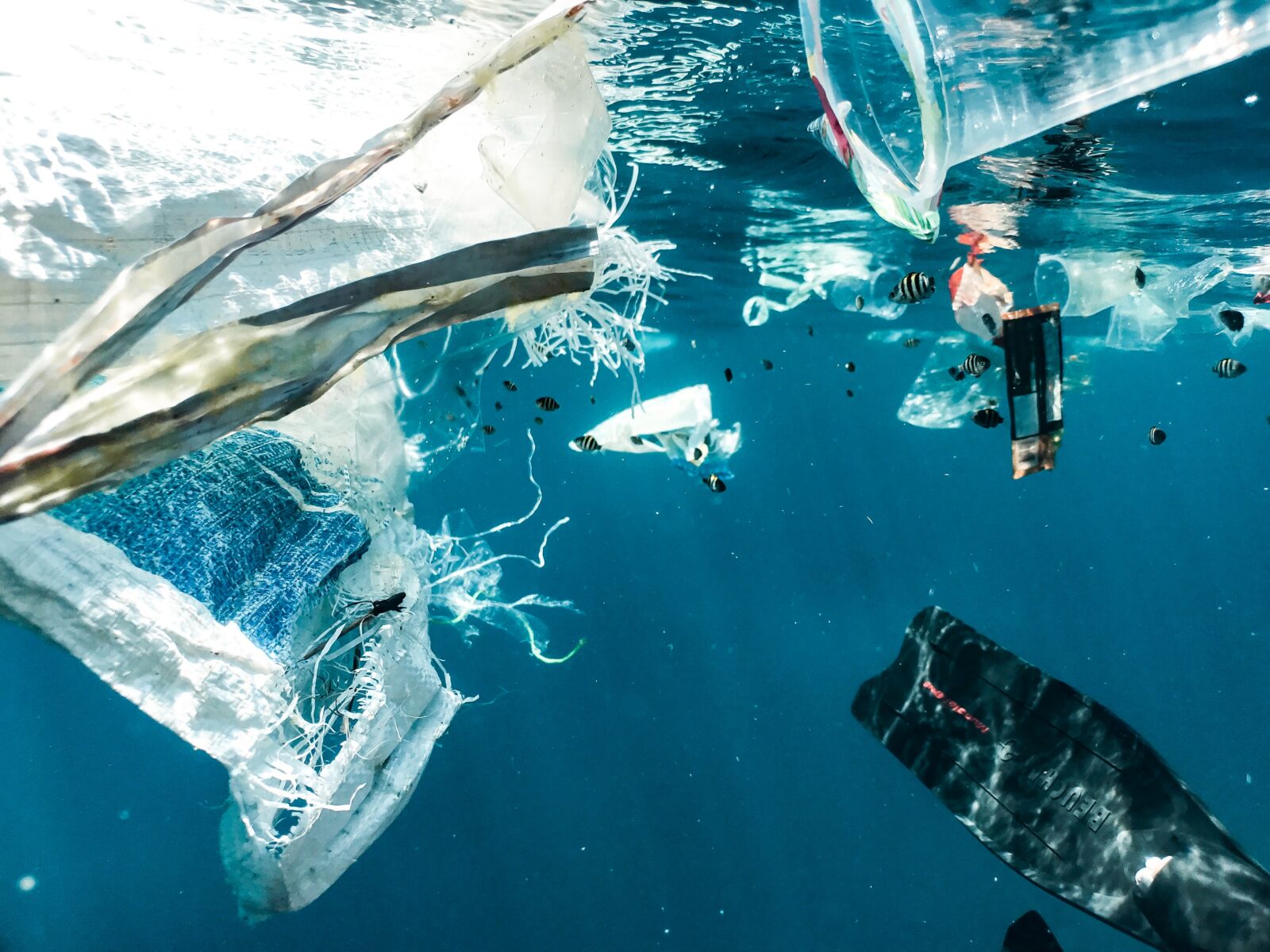
Guest blog by Lucy Wust Microplastics is a term that is worryingly on the rise in the media. They are found almost everywhere, and their polluting and damaging effects are felt heavily on marine environments. Can seagrass present a solution in our fight to tackle this widespread plastic contamination? What are microplastics and where do they come from? Microplastics are tiny plastic particles defined as being less than five millimetres in length. There are two categories of microplastic: primary and secondary. The category the microplastic is in tells us how it entered the environment. Primary microplastics are plastic fragments that were already five millimetres or less in size before entering the environment. Examples from this category include products for commercial use such as microbeads in exfoliants and other cosmetic products, and microfibres shed from washing our clothes. Water filtration systems cannot filter out these tiny particles and so they end up directly entering the ocean. Secondary microplastics are particles that result from the natural degradation of larger plastic pieces after entering the environment. For example, wave action, wind abrasion and ultraviolet radiation from sunlight can cause plastics such as water bottles and plastic bags to fragment and breakdown into tiny pieces. Both categories show us that it is the result of increased human use and release of plastic which is fuelling this mass of microplastics in marine environments, whether that is directly or indirectly. Many factors regarding microplastics, such as their high durability and level of accidental release, have caused their concurrent increase in abundance and geographical range alongside human population growth (Rocha-Santos and Duarte, 2015). The environmental impact of microplastics Despite microplastic release having been first identified in the 1960s (Ryan P.G., 2015), consumer awareness of the dangers of microplastics seems to only just be catching up now. More extensive research into the effect of microplastic on marine environments has only been conducted relatively recently, but there is still no conclusive evidence of the long-term consequences; an uncertainty that could potentially exacerbate their danger since their distribution is increasing. However, what is certain is the geographical range of microplastics; they are everywhere. Microplastics have been found in; a multitude of species, deep oceans, the Artic, the air we breathe and the water we drink, just to name a handful. It is there that they will stay and accumulate, since microplastics are not biodegradable. It could take hundreds or thousands of years for them to break down which highlights the importance of exploring ways to actively reduce their abundance in the environment. Microplastics come in different shapes, sizes and appearance, all of which influence how toxic they are to humans and the environment; thus making it difficult to assess the extent of their harm. Up until recently, research has focused on larger plastic items rather than microplastics, with the former widely known to cause entanglement and suffocation to marine life. However, researchers have identified that microplastics certainly pose a risk too; reductions in growth, fitness, and reproduction in marine animals due to microplastic ingestion have been observed (Horton et al, 2017), as well as the potential for microplastics to be carried further up the food chain and cause long-term damage. A lot of these problems will stem from marine life mistaking the microplastics for food, which can directly harm them, or indirectly cause them to not eat enough food. In addition, microplastics have been shown to act like a sponge by absorbing pollutants and chemicals, thereby transferring them from the environment into organisms. Not only is the threat of microplastics concerning, but the fact that they could be increasing the distribution of other pollutants intensifies their potential threat. What is currently being done to reduce microplastic in the ocean? How can seagrass help? The growing concern of the effect of microplastics has resulted in a few recent changes employed on a larger, government scale, but also on a smaller and more individual level. These include but are not limited to; the ban of the sale of products containing microbeads which came into effect in the UK 2018, the increasing efficiency of wastewater and drinking-water treatments, the avoidance of single-use plastic items such as straws and cups, recycling awareness and environmental education. So where does seagrass come into this? A study conducted by Sanchez-Vidal et al. (2021) found that seagrass meadows promote the trapping and aggregation of large- and micro-plastics, which results in their eventual escape from the coastal ocean. The species of seagrass, Posidonia oceanica, loses its leaves in autumn. These leaves are washed up by waves and currents and accumulate on beaches. The study found up to 613 plastic items per kg of washed-up loose leaves, ultimately concluding that the plastic gets intertwined and subsequently trapped in the seagrass. The plastic is then easily identified on the beaches and can be removed by us, emphasising the importance of our role in this clean-up too. However, ongoing declines in seagrass abundance points to reductions of this marine plastic trapping, just as we are starting to realise their clean-up potential. There is also uncertainty around the danger microplastics and large plastics pose to seagrass itself, thus it is crucial to ensure their conservation and not to view them as the only solution to plastic pollution. Further research is vital to identify; the extent of seagrass plastic trapping, the range of seagrass species capable of plastic trapping, seasonal dependency regarding the loose leaves, the varieties and limitations of plastic that can be trapped, and much more. Nevertheless, this study has identified a key trait of seagrass that could help marine life health. In conclusion, we are responsible for the growing plastic pollution in the ocean and ultimately the devastating consequences it brings to marine life. Ongoing research, individual lifestyle changes and charitable actions are just a few of the means adopted to tackle this worrying problem, and seagrass could present a natural solution to aid in our fight. However, we cannot let seagrass do all of the work in removing microplastics
What is blue carbon?
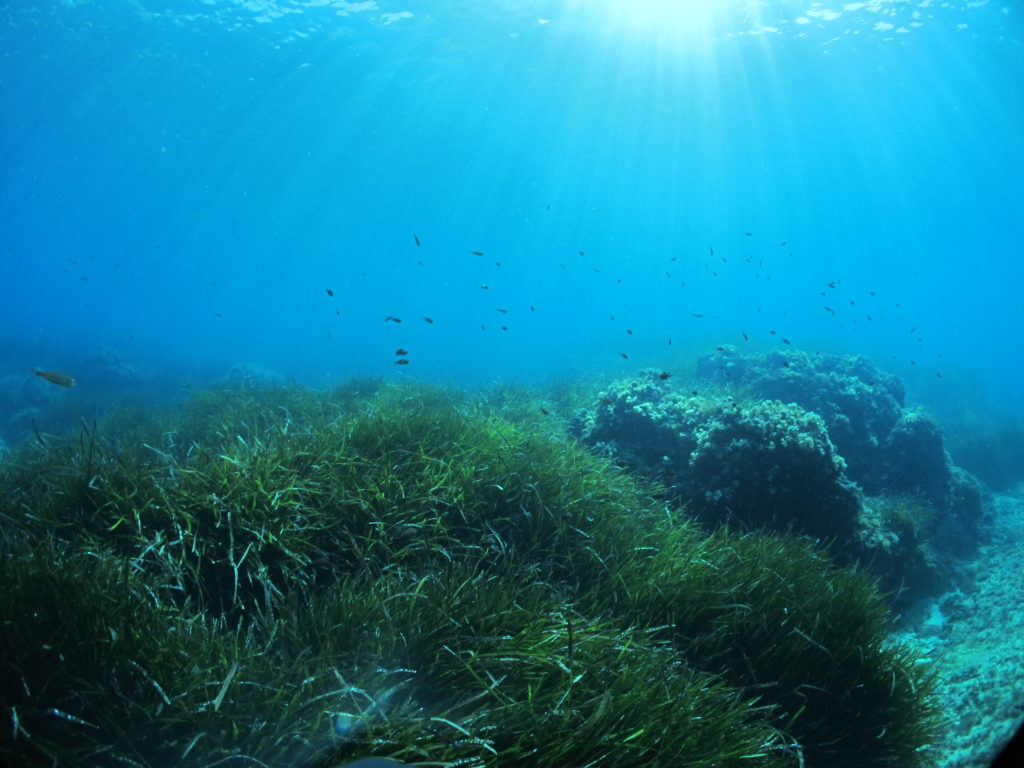
By Jenny Black The Carbon Cycle It is likely that we have all heard of carbon but what might not be known is the fundamental role it plays in our ecosystems. Carbon will naturally move between the atmosphere and the earth’s surface through interactions between organisms and ecosystems in a process known as the ‘carbon cycle’. In the carbon cycle, carbon can be a gas in the form of carbon dioxide (CO₂), or solid within organisms and rocks. On land, in what is known as terrestrial ecosystems, CO₂ can be captured, or sequestered, from the atmosphere and stored within plants in the process called photosynthesis. Here, plants use CO₂ and sunlight to create food for the growth of new plant tissue. This is a very basic description of the carbon cycle but what is not mentioned is the role of the ocean and marine ecosystems. Carbon exists in the sea in multiple forms (as seen in Figure 1). It can be dissolved in the water itself, stored by organisms in their bodies, buried in soil, or stored in rocks (Barnes, 2020). Carbon will move throughout these different stages and will be stored for different lengths of time depending on the stage. For example, carbon stored in plants and animals will be stored for the duration of that organism’s life. After it dies, some of the carbon will be released back into the atmosphere as CO₂ as bacteria breaks it down, and some will be buried within the sediment. Carbon that is buried within the sediment can be trapped and stored for much longer periods of time. In some cases, carbon stored in the plant tissue of rainforests can be retained for decades or centuries, but carbon stored within sediment can last for millennia (Nellemann et al., 2009). Figure 1: the oceans role in the carbon cycle. What is Blue Carbon? Whilst all marine life has a part to play in the carbon cycle, there are certain ecosystems within our oceans that act as major carbon stores, or carbon sinks, capable of capturing carbon in numerous types of forms. Think of it as the oceans equivalent to terrestrial rainforests that capture carbon and store it within their plant tissue and soils (Nellemann et al., 2009). The main blue carbon ecosystems include seagrass meadows, kelp forests and mangrove forests (Macreadie et al., 2019). Carbon that is captured and stored is called blue carbon (Nellemann et al., 2009). Figure 2 shows the three main blue carbon environments mentioned above. Figure 2: three key blue carbon ecosystems; Mangroves, Seagrass Meadows, and Kelp Forests (Nellemann et al., 2009). How is Blue Carbon captured and stored? There are two forms of carbon, organic and inorganic carbon. Inorganic carbon can be found in the environment as CO₂. The storage of atmospheric CO₂ in the oceans is complicated due to the barrier of water between the atmosphere and the blue carbon stores below. Because of this, CO₂ must dissolve into seawater to reach the blue carbon ecosystems below. After dissolving, CO₂ can be used by plants for photosynthesis, or it is mineralised into a hard carbonate by the likes of coral reefs and shell building organisms. Organic carbon on the other hand is found within the tissue of living organisms. Like terrestrial plants, some blue carbon ecosystems such as seagrass meadows can photosynthesise and store carbon within their plant tissue. What is unique about blue carbon ecosystems is that they can store both organic and inorganic carbon that they have sequestered and collected themselves, as well as storing carbon that has been sequestered by other terrestrial and marine ecosystems. Tidal and fluvial systems bring carbon particles from other marine and terrestrial suspended within its waters. Blue carbon ecosystems provide resistance to the flowing particles in the water column. They slow the speed of the water and capture the particles, encouraging them to be deposited into the sediment below. Dense root systems in the sediment provide protection preventing particles from being re-suspended. Over time, the carbon particles build up with old particles being buried below influxes of fresh material burying and protecting the carbon. This unique characteristic is the reason why blue carbon ecosystems can store ten times more carbon by burial than terrestrial ecosystems (McLeod et al., 2011). Figure 3 uses the example of a seagrass meadow of how different sources of carbon particles can be caught and stored within its sediment. Figure 3: seagrass and its role in the blue carbon cycle. Vital Ecosystems Blue carbon ecosystems offer many benefits to our oceans and coastlines including environmental protection, promotion of high biodiversity as well as carbon sequestration and storage. With governments and multi-national corporations acknowledging blue carbon ecosystems as the climate-combating solutions that they are, it is exciting to see blue carbon being given the recognition that it deserves. What is important for the future is continued protection and restoration of these environments. If we help to protect them, they will help us in our fight against climate change. Jenny is a masters student studying Aquaculture, Environment and Society in association with the University of the Highlands and Islands, University of Crete, Université de Nantes, and Radboud University. Her interest in blue carbon began with her Geology BSc dissertation where she investigated carbon storage within the soil of Scottish seagrass meadows. Since then, she has been focusing on the potential of blue carbon ecosystems and how they can be involved in carbon storage, environmental restoration, and food supply. References Barnes, D., (2020). What Is Blue Carbon and Why Is It Important?. Front. Young Minds. 8:154. doi: 10.3389/frym.2019.00154 Kennedy, H., J. Beggins, C. M. Duarte, J. W. Fourqurean, M. Holmer, N. Marb a, J. J. Middelburg. (2010). Seagrass sediments as a global carbon sink: Isotopic constraints. Global Biogeochem. Cy. 24: GB4026. doi:10.1029/2010GB003848 Macreadie, P.I., Anton, A., Raven, J.A. et al. (2019). The future of Blue Carbon science. Nat Commun 10, 3998 https://doi.org/10.1038/s41467-019-11693-w McLeod, E. et al., (2011). A blueprint for blue carbon: toward an improved understanding
An East African Marine Safari

By Sam Freeman In the summer of 2018, after finishing my penultimate year of my undergrad Marine & Freshwater Biology degree, I travelled to Watamu. Watamu is a small but beautiful coastal town just north of Mombasa, in Kenya – East Africa. Watamu is famous for its picturesque sandy-white beaches and tourist filled hotels dedicated to ecotourism. I volunteered on the marine programme at an environmental conservation NGO called A Rocha Kenya for two months. They are based right in the middle of East Africa’s oldest marine protected area, the Watamu Marine National Park (WMNP). The park covers a 10 km2 section of the lagoon and back-reef, south of Watamu village, and includes a diverse array of habitats (including coral reefs, seagrass beds, mangrove areas and a range of intertidal habitats including mudflats, beaches, and rocky shorelines) between the sand dunes all the way out to the fringing reef crest. The WMNP is a smaller, more strictly managed area of the larger 164 km2 Watamu-Malindi Marine National Reserve which extends to the north (see figure 1). WMNP was created in 1968 and the Watamu Malindi Marine National Reserve was declared a UNESCO biosphere reserve in 1979. The park is officially managed by Kenya Wildlife Service, who are responsible for the management and conservation of the marine park. Figure 1: The geographical location of the Watamu Marine National Park within the wider Watamu Marine National Reserve along the coast of East Africa. Figure obtained from Sindorf et al. (2015). During my time there I was given responsibility to steward the two ongoing studies. I was put in charge of surveying the park for the location and distribution of IUCN Red listed soft pillow coral Anomastraea irregularis (figure 2). Whilst being internationally scarce, significant populations are located along the shallow rocky shores of the park. Additionally I was involved in snorkel elasmobranch (sharks, rays, guitarfish) surveys. This meant snorkelling out to the edge of the reef, 1 km from the park shore and taking stock of all the species I saw. My tropical species identification skills improved dramatically, as well as my tan! Other duties I was involved in were helping out around the site, fixing a makuti thatch roof, and setting up internet cabling to serve a new educational building that was out of signal range. This experience taught me a valuable lesson in the importance of independent stewardship of the work assigned to me. I had to learn to adapt quickly, and pickup new skills required for the task at hand, this has proved valuable to me countless times since. Figure 2: Photograph of an A. irregularis colony taken by Dawn Goebbels So how does Seagrass relate? Well… out of the 12 species of seagrass recorded in Kenya, 11 have been found inside WMNP. One of these seagrass species, Zostera capensis, is listed as Vulnerable on the IUCN Red List due to decreasing population. Seagrasses are the most dominant component of the park covering nearly 40% of the benthos (Cowburn et al., 2018). This value comes from a study that mapped habitats found in 8.35 km2 (83.5% of 10 km2) of the park’s area. The mapping revealed that subtidal seagrass covered 3.292 km2 of (39.4%) of the mapped area and Intertidal seagrass covered 0.359 (4.3%) (Cowburn et al. 2018) This renders WMNP an area of high importance regarding international seagrass conservation efforts. Seagrass support a large range of flora and fauna they associate with. This marine plant population is a vital part of the marine ecosystem due to their ecosystem services. Seagrass provides ecological roles, blue carbon storage, feeding grounds for coral reef organisms, habitat and nursery areas for numerous marine species, fishery support, sediment stabilisation, improved water quality and coastal defence. They must not be allowed to disappear. The current A Rocha Kenya marine intern Eric Thuranira has put together a seagrass identification guide for the species within WMNP: The 11 Species Cymodocea rotundata Cymodocea serrulate Enhalus acoroides Halodule uninervis Halodule wrightii Halophila ovalis Halophila stipulacea Syringodium isoetifilium Thalassia hemprichii Thallassodendron ciliatum Zostera capensis References: Cowburn, B., Musembi, P., Sindorf, V., Kohlmeier, D., Raker, C., Nussbaumer, A., . . . Kamire, J. (2018). The habitats and biodiversity of Watamu Marine National Park: Evaluating our knowledge of one of east africa’s oldest marine protected areas. Atoll Research Bulletin, (618). Sindorf, V., Cowburn, B. & Sluka, R.D. (2015) Rocky intertidal fish assemblage of the Watamu Marine National Park, Kenya (Western Indian Ocean). Environ Biol Fish 98, 1777–1785. https://doi.org/10.1007/s10641-015-0397-1
Seagrasses starred in Ocean Hackathon Mexico 2020
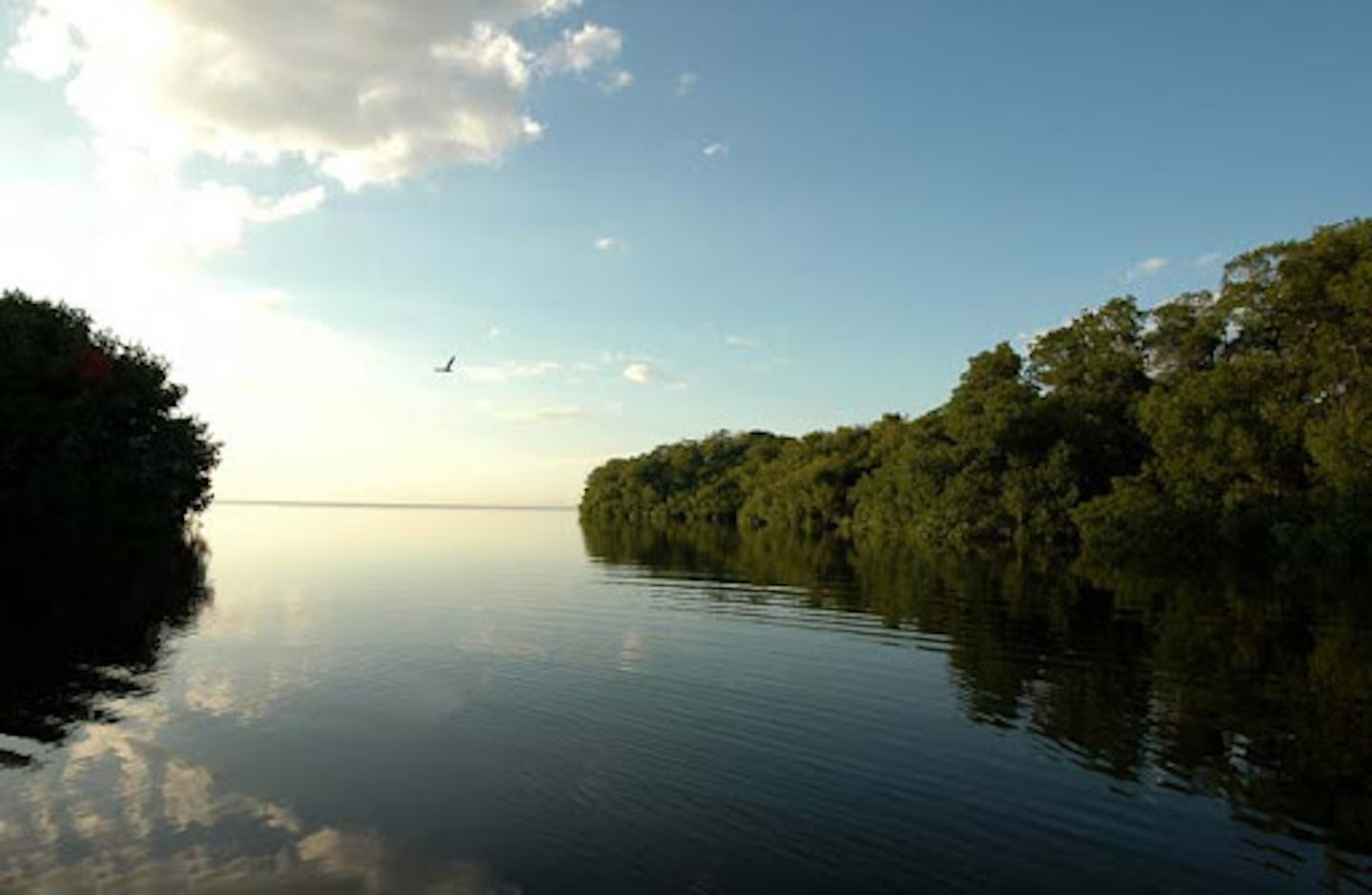
[vc_row type=”in_container” full_screen_row_position=”middle” scene_position=”center” text_color=”dark” text_align=”left” overlay_strength=”0.3″ shape_divider_position=”bottom” bg_image_animation=”none”][vc_column column_padding=”no-extra-padding” column_padding_position=”all” background_color_opacity=”1″ background_hover_color_opacity=”1″ column_link_target=”_self” column_shadow=”none” column_border_radius=”none” width=”1/1″ tablet_width_inherit=”default” tablet_text_alignment=”default” phone_text_alignment=”default” column_border_width=”none” column_border_style=”solid” bg_image_animation=”none”][vc_column_text] Written by Maru Bernal Last October 9th, the Ocean Hackathon® 2020 took place in Mexico City. This is an event in which multidisciplinary teams have access to international databases and have 48 hours to develop a pilot project or proof of concept that targets an ocean-related problem. This year’s event, organized by IFAL (French Institute of Latin America), had seagrasses as protagonists when the team called “Carbón ¡Oh no!” won the first place with a project that targeted seagrass beds conservation. In spite of their relevance and vulnerability, seagrass beds constitute one of the least protected ecosystems on the planet. For this reason, the “Carbón ¡Oh no!” team developed a model based on artificial intelligence that is capable of detecting changes in seagrass coverage through Landsat Satellite Images. With this model they aim to estimate the amount of carbon stored in seagrasses from “Los Petenes” Biosphere Reserve, then translate it into carbon credits and finally give an estimated value in dollars. The objective of their project is to attract the attention of governments and decision makers on the biological and economic importance of this ecosystem; as well as making visible the urgent need to preserve it and emphasize its potential to mitigate climate change. Additionally, they created a remote sensing prototype based on a micro-spectrograph that would be specialized incollecting data in situ with the purpose of complementing satellite information and strengthening monitoring in this areas; facilitating in this way the creation of management and rehabilitation plans. The ten team members who participated in the solution of the challenge are Luis Gerardo Canales (Earth Sciences and Mathematics, UNAM), José López (Biologist, UAM), Ismael Contreras (Eng. in Natural Resources, Chapingo), María Sara del Río (Biologist and Mathematics, UNAM), Joel Herrera (Physicist, UV), Karen Álvarez (Biologist, UAM), Christopher Foster (Earth Sciences, UNAM), Adrián Acevedo (Biologist, UNAM), Miriam Álvarez (Engineer Geologist, UNAM) and Maru Bernal (Biologist, UNAM). Mexico has new seagrass protectors! Title image credit: Los Petenes_CONANP[/vc_column_text][/vc_column][/vc_row]
Who knew saving the planet could be so peaceful?
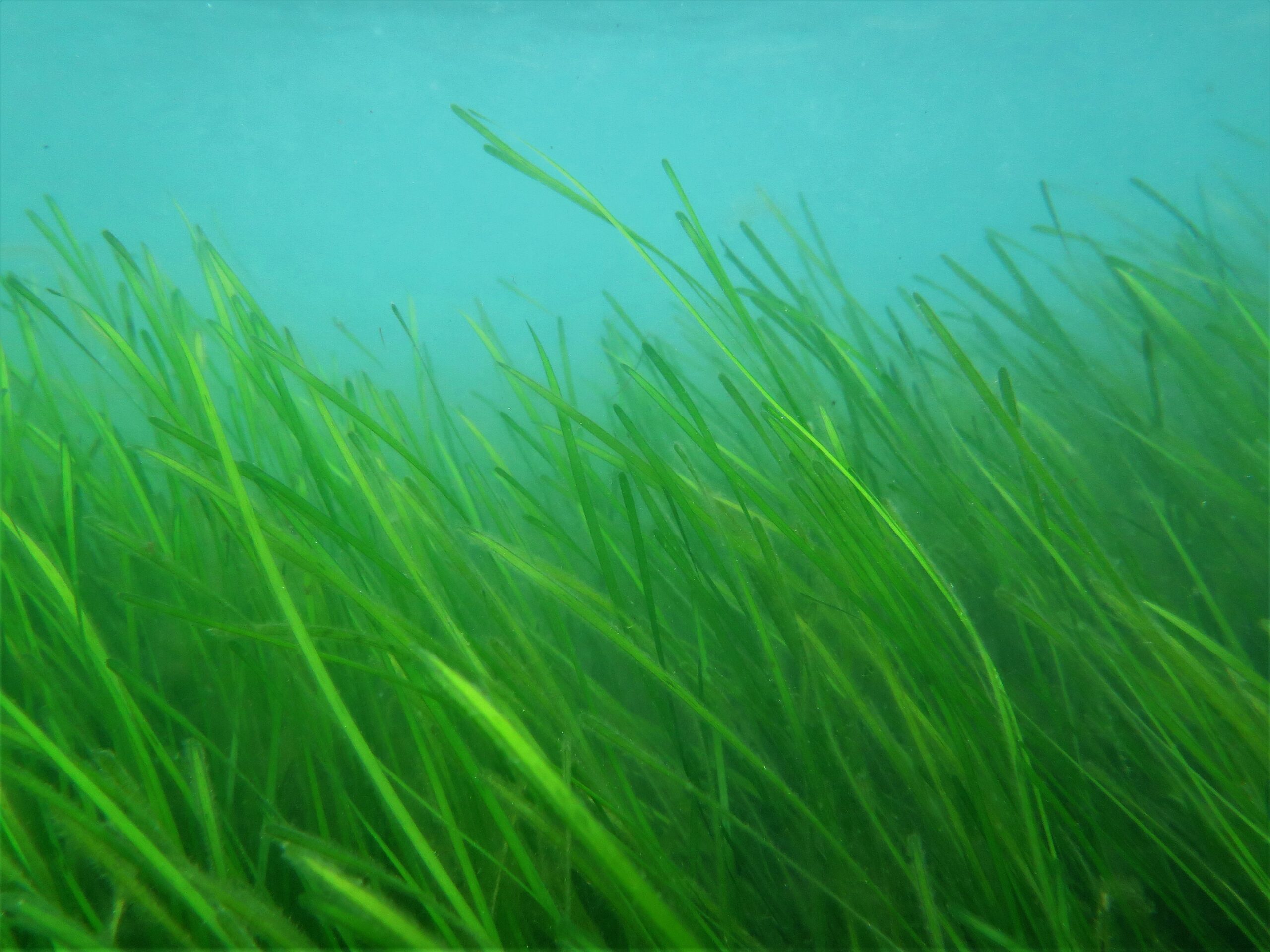
Like many of you, WWF staff have been working from spare rooms, kitchen tables and the occasional garden patio for the past few months. When a call came to join our partners at Project Seagrass and Swansea University on a seagrass seed collection trip to North Wales, it was a welcome break from the (new) norm. WWF has been working closely with Project Seagrass, Swansea University and Sky Ocean Rescue to conduct the biggest seagrass restoration project undertaken in the UK – aiming to restore 20,000 m2 of the marine plant, following the disappearance of up to 92 per cent of the UK’s seagrass in the last century. We’re always keen to share accounts of our work with partners with our supporters so with that in mind, I travelled to Porthdinllaen hoping to contribute to the long-term task of collecting up to a million seeds for planting at and also to document how and why we’re taking on such an endeavour! Our days began by greeting the dawn at low tide with mesh bags in hand as we waded through the shallows, searching for the bright green shoots that that indicate seed-bearing spathes of seagrass. These peaceful, pre-coffee excursions were taking place in the midst of a pandemic and so each of the volunteers setting forth each morning were alone together as we quietly spread out across the meadow for some socially distanced seed picking. After a week, I was convinced that no form of morning yoga, meditation or lie-in could be quite as restful as this! As the tide turned, we’d leave the bay and return in the afternoon when conditions were better for getting in the water and collecting seeds from deeper parts of the meadow. These were more energetic affairs – our makeshift snorkelling staging post abuzz with activity as people grappled with masks, fins and snorkels and braced themselves for a dip the chilly waters of the Irish Sea in August. With so little seagrass remaining in the UK, I’m reminded whenever I swim above what a shame it is that so few get the chance to experience the closest thing we have to underwater forests that exists within yards of the shore. As I dived from surface to seabed to search for seeds, I’d catch glimpses of the wildlife that depends on seagrass for shelter and sustenance – anemones clinging to individual blades of grass, spider crabs tracing the boundaries of individual patches and the young fish darting across the meadows that double up as their nurseries. Each afternoon, I’d promise myself that I’d remain in the water a little longer than the previous day, shortly before bouts of uncontrollable shivering would send me to shore after little less than an hour! After every session, our collected bounty would be added to a huge tub of harvested of seeds back at base which provided two constant reminders and affirmations of our progress – the first being the ever growing quantities… and the second being the ever worsening smell as the shoots collected earlier began to gently decompose and separate from their previously tightly held seeds. Suffice to say, there are some things we’re happy not to share with our supporters… Our seagrass meadows remain at risk and with so many of our iconic coastal species reliant on them, we can ill afford to lose more. What is less well known is that the case for restoring meadows, like the one at Port Dale where these seeds will soon be planted, is one that could help us save the planet. Healthy seagrass meadows can capture and store carbon emissions at a rate 35 times faster than tropical rainforests. We hope that this work of this partnership will lead to further successful restoration efforts across the country and bring a brighter future for these incredible coastal ecosystems. Words and photos by Sean Clement
Two Aquarists went to Wales
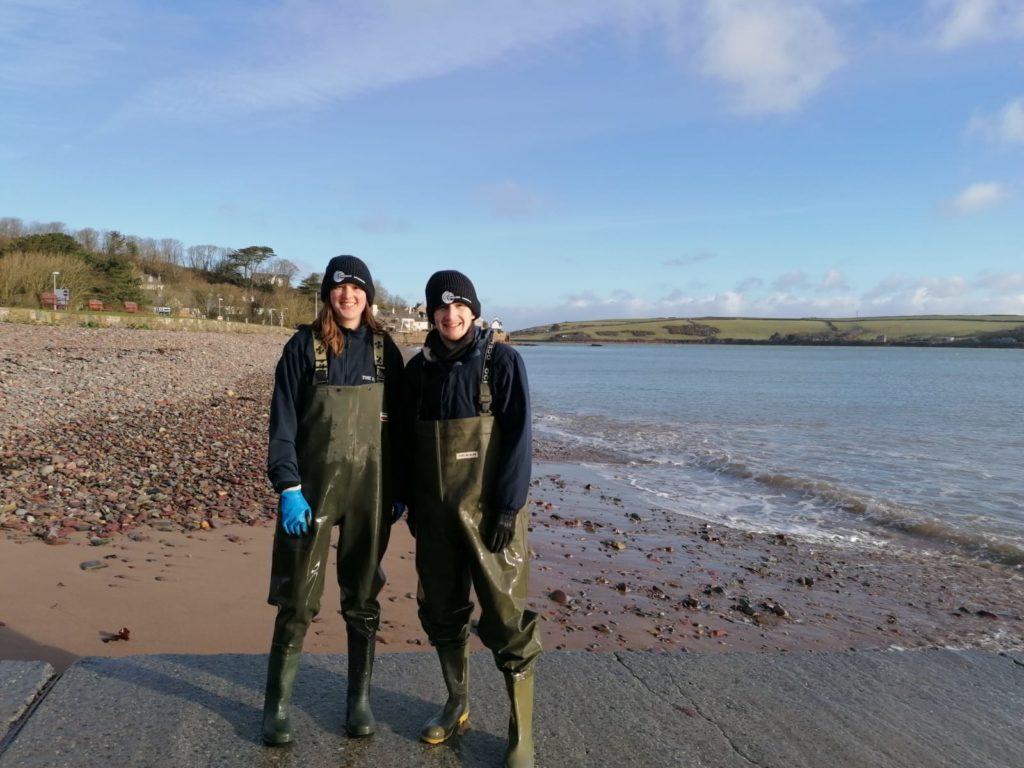
Elise and myself look after all the native marine species at The Deep, an aquarium in Hull. I’m very new to all things native having previously worked with penguins and tropical fish but Elise is a pro, thankfully accepting me as her apprentice. We first heard about the work of Project Seagrass and Swansea Uni when Elise went to the National Aquarium Conference (NAC) in late 2019. From there we attended the first BIAZA seagrass focus group meeting organised by Sam and only a few weeks after that we set off on the train to Wales. The seven hour journey was very much the calm before the storm but what a wonderful, happy storm it would prove to be. The scale of the work to be achieved in the week was imposing but equally impressive was the effort carried out to get to that point. Twenty thousand small bags had been filled by a small army of school children, volunteers and the dedicated project team before being hand tied to twenty kilometres of rope ready to be planted. Alongside that was the harvesting and preparation of the three quarters of a million seeds that would go into the bags. This doesn’t even touch on the logistical work carried out to put everything in place. During the week each rope, 100m long, would be laid to restore seagrass over an area of one and a half football pitches. Day one was spent loading the vans in typical Swansea rain with all the equipment needed and prepping the two boats (Calypso and Zostera) that would be used before driving down to Dale and getting everything set up for the week ahead. This was when the true scale of the project hit home, stepping into the library at the fort and seeing the piles of boxes containing the prepped bags and ropes. Watching this pile shrink through the week was immensely satisfying as it was a clear visible indicator of the fantastic work being done by everyone involved. The first task we were involved with was prepping the individual crates to be sent down to the boat for laying. This involved untangling the ropes, filling each bag with around fifty seeds, topping them up with sand and adding some water before coiling them again for soaking. This work was completed in small teams of between three to six people, the composition of these teams was always changing as different volunteers arrived each day and people swapped in and out of different jobs in the bigger picture. What never changed was the amazing work atmosphere and efficiency with which the process was carried out, fuelled by a constant supply of tea, cake and music. The opportunity to spend so much time working and chatting with such an amazing group of people will live long in the memory. The bag filling was paused every now and then by trips to the beach with the completed crates containing the seeds to load into the boats. As energy levels dropped through the week the work ethic of the team really shone, sharing the load of the heavy crates and sand bags. Work by the boat team was almost continuous as more and more lines were laid, one quick break being met with some well-deserved pea and ham soup from the locals. By Friday all targets had being met with seven hundred and fifty thousand seeds planted and the library empty of boxes. Everything was tidied up and it was time to head back to Swansea for a warm shower, a takeaway and a good sleep. Sitting down after pretty much non-stop activity allowed time to reflect on all that had been achieved and how much of a pleasure it had been to do our bit for the environment alongside such a great group of people. We are both so grateful that we were able to be involved and can’t thank Project Seagrass enough, very much looking forward to the day where we can go and see the seeds growing and the positive impact the project will have had on local diversity. Matt and Elise
From studies to seagrass
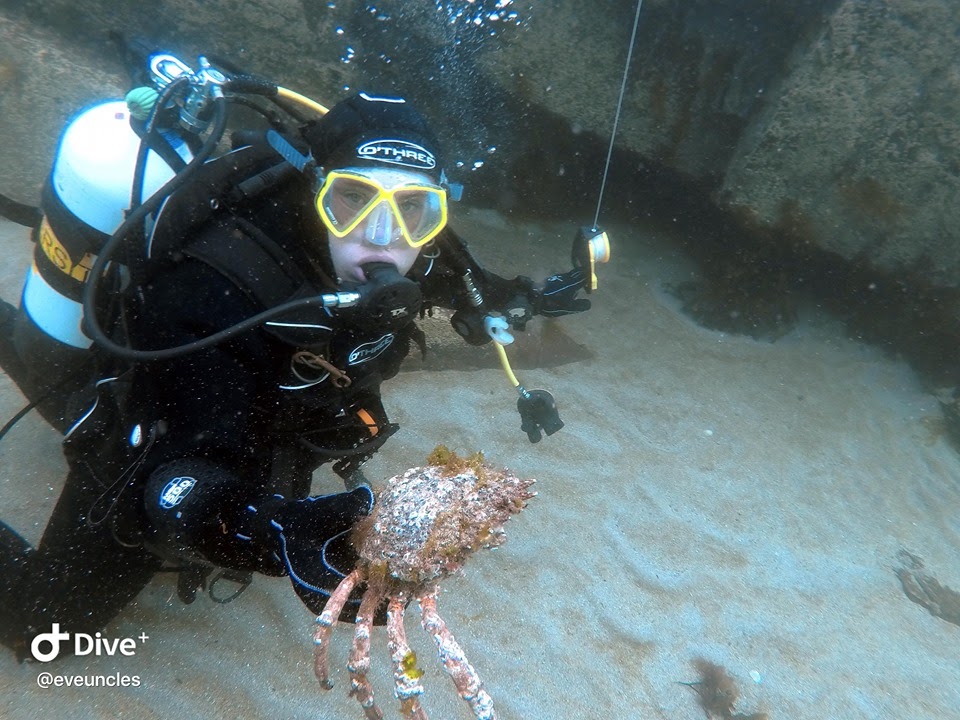
Mike, Sam, Sam and Owen all started out as students with a love for the ocean on their doorsteps, over the summer they became ‘underwater gardeners’ and joined the Seagrass Ocean Rescue team from the collection of almost a million seeds through to planting 1.5 hectares of seagrass in Dale, Pembrokeshire. Mike Parker, Sam Files, Sam Petts and Owen Maddocks are four students from Swansea University, they met three years ago through the sub-aqua club and have logged their fair share of dives together ever since. Over a Zoom call in April, I had the opportunity to ask them about their time volunteering with Seagrass Ocean Rescue. We started our seagrass journey together last summer and they’ve returned with unwavering support to all our events from picking to planting. When did you develop an interest in marine ecosystems? Mike Parker: I joined the sub aqua club in my first year of university and got into diving in my second year… then it took over my life! Sam Files: I’ve always lived by the coast and spent a lot of time at the beach and swimming in the sea, then I started studying marine biology at Swansea and joined the dive club. Sam Petts: I’ve always liked underwater habitats and enjoyed swimming and being around water, I guess for me it was a natural progression to go deeper and see what’s hidden under the water! Owen Maddocks: I grew up on the coast and spent a lot of time rock pooling and surfing. How did you find out about Project Seagrass and how have you been involved? MP: I heard about it through Evie Furness, she later invited the dive club to come diving for seeds. We went to Weymouth and Torbay for a week in the summer, had a hilarious week of camping, sun and seagrass! I came along to the rope tying days and helped tie the bags to the rope ready for planting. SF: I was doing my year in industry at Plymouth aquarium and they had a seagrass exhibition, I got talking to some of the team there and they mentioned Project Seagrass and the team at Swansea University. I later joined these guys with Swansea’s dive club to go pick seeds, I did some of the rope tying and then joined Sam and Owen in Dale in February! SP: I’d spoken to Evie about her work and she invited the dive club on an opportunity to go seed diving, I helped organise some of the dives and went along on the trip! I helped out in February with some of the preparation and planting. OM: I heard about it through the biosciences department and dive club at Swansea. I first got involved with seed picking then helped with seed preparation in February. What’s been your most memorable experience with the project? MP: I think diving has definitely been my highlight and having the opportunity to meet people with the same common interest. SF: Trying to put up the tent on a windy cliff in Weymouth was a stand out moment for me! It would be between that and sending Mike and his dive buddy in the opposite direction from the seagrass… it took them a while to find it! I think it’s been nice to be involved in the whole process, to see it come full circle. It’s been exciting seeing people coming from around the country, with such a wide variety of backgrounds and generations – really encouraging for the future! SP: It was a habitat we’d never dived in before which was something I don’t think you can forget, and it was nice to dive with a purpose. Diving is fun anyway but when you’re doing something positive at the same time, it feels good! There was a real sense of accomplishment, and I was lucky to be last one in and last one out – I got to see everyone on the boat getting excited for the dive ahead and then when i’d come up, just seeing this huge pile of seagrass seeds, that was really cool! OM: Probably diving through the seagrass meadows and seeing all the juvenile fish and diversity… I felt like a human, underwater lawn mower. Is there anything you’ve learnt from your experience with Seagrass Ocean Rescue? MP: I think there should be greater awareness for projects like these! Don’t miss out on the opportunity to get involved. I think in any age group you can sometimes get trapped in a bubble but this gives an opportunity to meet people from outside your usual crowd. It was a really nice way to gently introduce people to marine sciences and conservation as well. It’s definitely a community that will stick around for future projects! SF: If you’re thinking of getting involved just go for it! It’s amazing to see what you’ve achieved, and the community is diverse and you meet people from all over! SP: It’s been a really great experience to do with friends but also to make new friends! It was a great opportunity to listen to people’s stories and to learn from others. It’s the first time I’ve been involved with a project and I hope to get involved with more conservation in the future. OM: I’ve learnt more about how conservation is applied in a real world setting and the value of seagrass for supporting biodiversity and blue carbon sequestration. At Project Seagrass we really appreciate the support of our volunteers, without them none of what we do would be possible! If you’re interested in helping out with future projects keep an eye on our social media, join the Project Seagrass Volunteers facebook group or alternatively don’t hesitate to contact us! By Eve Uncles
Project Seagrass at Awel y Mor Primary
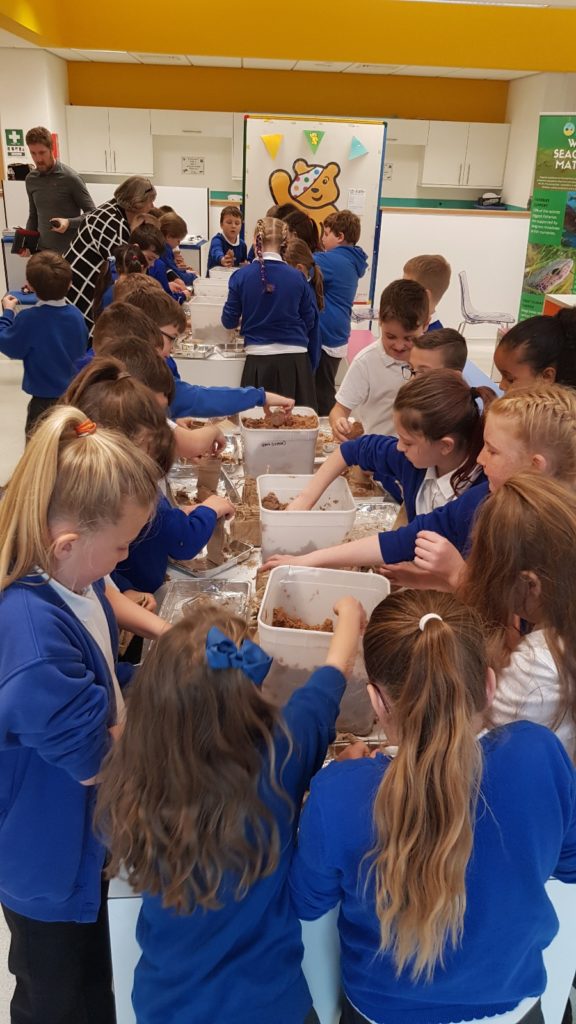
We were extremely excited to build up a relationship with Project Seagrass. Being asked to take part has enabled us to develop our skills and knowledge as staff to help progress with our own school project ‘AYM Project Plastic’. The children have absolutely loved this experience! They have gained lots of skills and knowledge. More importantly for us as a school, many of our pupils find it difficult to think about what they aspire to be, however since working with Project Seagrass many now talk about their aspirations to become marine biologists and are very eager for us to become part of more conservation projects. The children have gone from knowing nothing about seagrass to being very keen to ‘show off’ what they have learnt about the importance of seagrass and how we can help restore and maintain it for the sea environment. They get very excited when Project Seagrass (especially Evie) are coming into school and every visit has been fun and enjoyable so the children always want to know how long until their next visit! We can’t thank Project Seagrass enough for this experience and look forward to working together in the future. Vicky Hibben & Gemma Ness Awel y Mor Primary School

